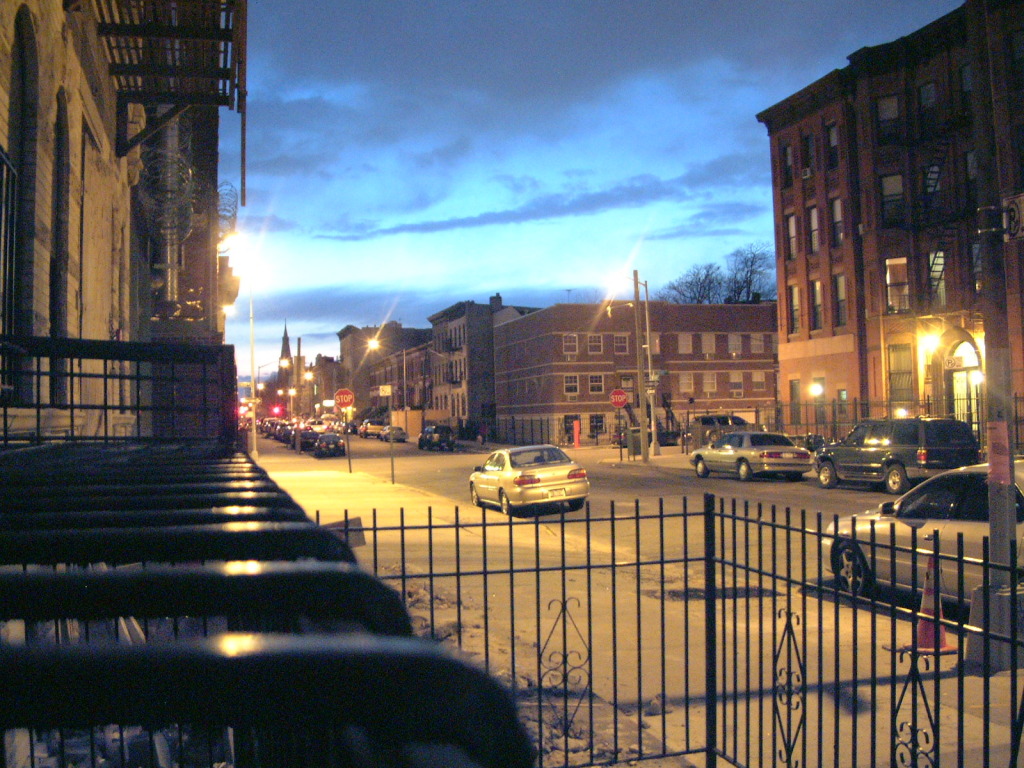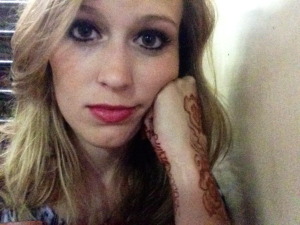
It is in those in-between spaces that real danger lies; that’s where it becomes hard to identify what is enjoyment and what is pain. (Image: sethw/Flickr)
The truck rumbled past as I ran down a small side street in Bedford-Stuyvesant, Brooklyn. It was a small delivery truck, and as it stopped at a red light I stopped too, distracted by an ad on its side for Grohe handheld shower heads.
At first glance, the ad was fairly conventional: a man and woman, ostensibly naked, being doused with water, but the expressions on their faces were unsettling. Flexing a bicep, the man had his mouth open, mid-roar. Water gushed around him as if it came from a fire hose. The woman beside him had her eyes closed and lips parted, looking entirely serene. Little dewy drops of water collected around her face. A showerhead for two: for him to power up, and for her to calm down.
I might not have been having those thoughts if the last few months hadn’t seemingly been dominated by just one debate in the media: how men exert power over women in all kinds of places. One place was the street, where the repeated catcalling of a girl in New York was videotaped and went viral. Instead of inspiring concern, the discussion around the video morphed into a conversation about its authenticity, and about how women need to calm down. Another place was university campuses, where my school gynecologist was handing me pamphlets on Title IX, a law that protects against sexual assault on school grounds, as well as asking intimate questions she had never asked before about my sexual history. A Columbia student carrying a mattress to protest the school’s reluctance to expel the man who raped her was put on the cover of New York magazine. She was not gently silenced because it didn’t look good for the football team, like a woman had been at my college seven years ago. UVA’s entire culture of sexual assault was explored in a lengthy Rolling Stone piece, spurring belated action by administrators. Unsurprisingly, it led to questions over the veracity of the woman’s story who came forward.
When these headlines were just emerging, I went to the Whitney Museum for the Jeff Koons retrospective, an artist whose work I associated with shiny balloon animals with mirror finishes and other banal objects. The exhibit ranged far beyond that. I found myself wandering through Made in Heaven, a series of larger-than-life grainy photographs of Koons and his ex-porn star wife Ilona Staller, taken in 1989. The photos were surprisingly explicit; the kind that had young women at the museum giggling and snapping photos to send to their girlfriends, and made old women gasp as they tried to reconcile the images as art. One enormous photo showed Ilona lying on her back on some sort of rococo-style bench or rock. Her chest is heaving, and her hands are up near her forehead. Koons, naked down to his hairy toes, is bending over her, seemingly unfazed by the scene. Not my kind of heaven, I thought.
It reminded me of a scene in the 1973 Western film High Plains Drifter, when a woman with blond, wispy hair like Ilona encounters Clint Eastwood in the dusty town of Lago. When she insults Eastwood by knocking a cigar from his mouth, telling him he has the “manners of a goat,” he promises to teach her a lesson in manners. Wasting no time, he pulls her into a barn, crouches over her, and — in almost the same position as Koons over Ilona — forces himself on her. She screams for help and beats her arms across his back. But then she starts to enjoy it. We’re left with an image of her lying on her back, hands up near her forehead, chest heaving in the hay.
An image of ecstasy between a man and his wife in a rococo landscape. A rape by a pillaging cowboy in a barn. A shower ad on the side of a truck — the promise of good water pressure.
I began to think of the fine line between enjoyment and pain. In the intimate space of a bedroom, rough lovemaking can feel exciting but suddenly hurtful and unwanted. On the street, a “you’re beautiful” in one tone can feel pleasant, but in another, disgusting. At a university, a rape is often only a rape if no one was drunk, if there was overwhelming physical force, or if she hated it to the bitter end. Violence must be absolute. And yet women were saying it wasn’t.
It seems that it is in those in-between spaces that the real danger lies, because that’s where it becomes hard to identify what is enjoyment and what is pain. I’m not sure what the wispy-haired blond in the barn would say about enjoying his use of force: if not at first, then later. Though the same phrase said on the street can mean two different things, I’m not sure that I could pinpoint exactly where it crosses the line. And I don’t know how the college girl who drank too much at a party explains that no, she definitely did not want that, not like that. But no, she did not say no.
California recently passed a law requiring verbal consent before sexual activity, attempting to remove ambiguity surrounding sexual assaults. What remains unclear, however, is how this would settle the “he said/she said” problem. That, and the measure doesn’t seem likely to stop assailants. The state wanted to use the law to draw a hard line in our deeply private lives, and came up with a solution that seems almost ludicrous.
Meanwhile in Virginia, the administration of UVA tried to stanch the flow of coverage of their culture of sexual assault after the Rolling Stone piece by suggesting every solution possible. They promised more trauma counselors and more police, new sexual assault policies and new drinking rules. Their efforts could change a lot, or they could change nothing at all.
In search of some kind of clarity I went back to a poem about the carnal that I have always trusted, Walt Whitman’s “I Sing the Body Electric.” After paragraphs of lists and anecdotes about groups of people he’s seen and imagines, Whitman separates man from woman. The female form, he writes, “attracts with fierce undeniable attraction,” while the male form, “too… is action and power.” Man and woman, equal in their energy and force.
On the way the female form loves, he writes: “Limitless limpid jets of love hot and enormous, quivering jelly of love, white-blow and delirious juice.” These are not little dewy drops, collecting above a woman’s calm head. They are jets, and they are limitless. And of how the male form loves: “The full-spread pride of man is calming and excellent to the soul.” I could almost imagine that man: eyes closed, lips parted (perhaps after intimacy), his body relaxed as if under a warm, calming shower.
In Whitman’s imagery, male and female forms do the opposite of what you’d expect: woman can be powerful and man can be calm. With Whitman, the possibilities of the carnal are boundless and joyous, and injurious pain seems to have no place. “The man’s body is sacred and the woman’s body is sacred,” he writes. Both are deserving of the same reverence and respect. Both are electric. In his world, there is no ambiguity. No confusion over what is pleasure and what is pain. There is no jostling for power, either. There is no need for it.
·
 Elizabeth Flock is a New York-based writer whose work has appeared in the New York Times, Washington Post, the Atlantic and the Village Voice. She is working on a book on modern love in Mumbai. You can follow her on twitter @lizflock.
Elizabeth Flock is a New York-based writer whose work has appeared in the New York Times, Washington Post, the Atlantic and the Village Voice. She is working on a book on modern love in Mumbai. You can follow her on twitter @lizflock.
